
Written by Kathleen Goodwin
When you enter the brightly lit, crisp and cozy tap room of Missoula’s Western Cider, the place seems familiar and welcoming. Music softly hums in the background, the decor is perfectly in-tune with the atmosphere, and the place is buzzing with the energy of an excited crowd. It is a go-to spot in the Missoula community, hosting events and craft markets and serving as the home of the kickoff harvest party for the Montana Cider Week, which takes place towards the end of September or early October each year. It is gathering place for people of all walks of life, and that is a beautiful thing. While it may feel like an old friend to Missoula’s community, Western Cider is relatively new, with its doors opening for business in the spring of 2017. Despite the newness, this place has made its mark on the local Missoula community, and the cider community of the Pacific Northwest and at large. Co-owner and orchardist Michael Billingsley sat down with Destination Missoula to discuss the origins of the award-winning Western Cider and why cider is something that we should all be excited for— and on the lookout for.

“It started from the orchard side of things,” Michael explained to me on a beautiful fall day on the Western Cider backyard. The sun warmed the cozy wooden tables, the green grass, and the small line of apple trees that separate the covered and uncovered sections of the patio. “My wife and I own an orchard down in Stevensville. I had always loved agriculture, but I grew up in a big city [in] San Antonio, Texas, and so I wasn’t really around [agriculture], but I always appreciated food. And then I watched the movie Lonesome Dove as a little boy—I was about four or five—and watched that with my dad and brother. We recorded it on VHS, and then I watched it over and over and over all the way through high school, and I always wanted to come to Montana ever since seeing that. So that is kind of why I came to Montana—really for no good reason at all.” He says this with a laugh, but it is a story all too common. It is hard not to fall in love with Montana, with its winding rivers and jutting mountain peaks. And Michael knew that this was the place that he wanted to make his mark, and his home.
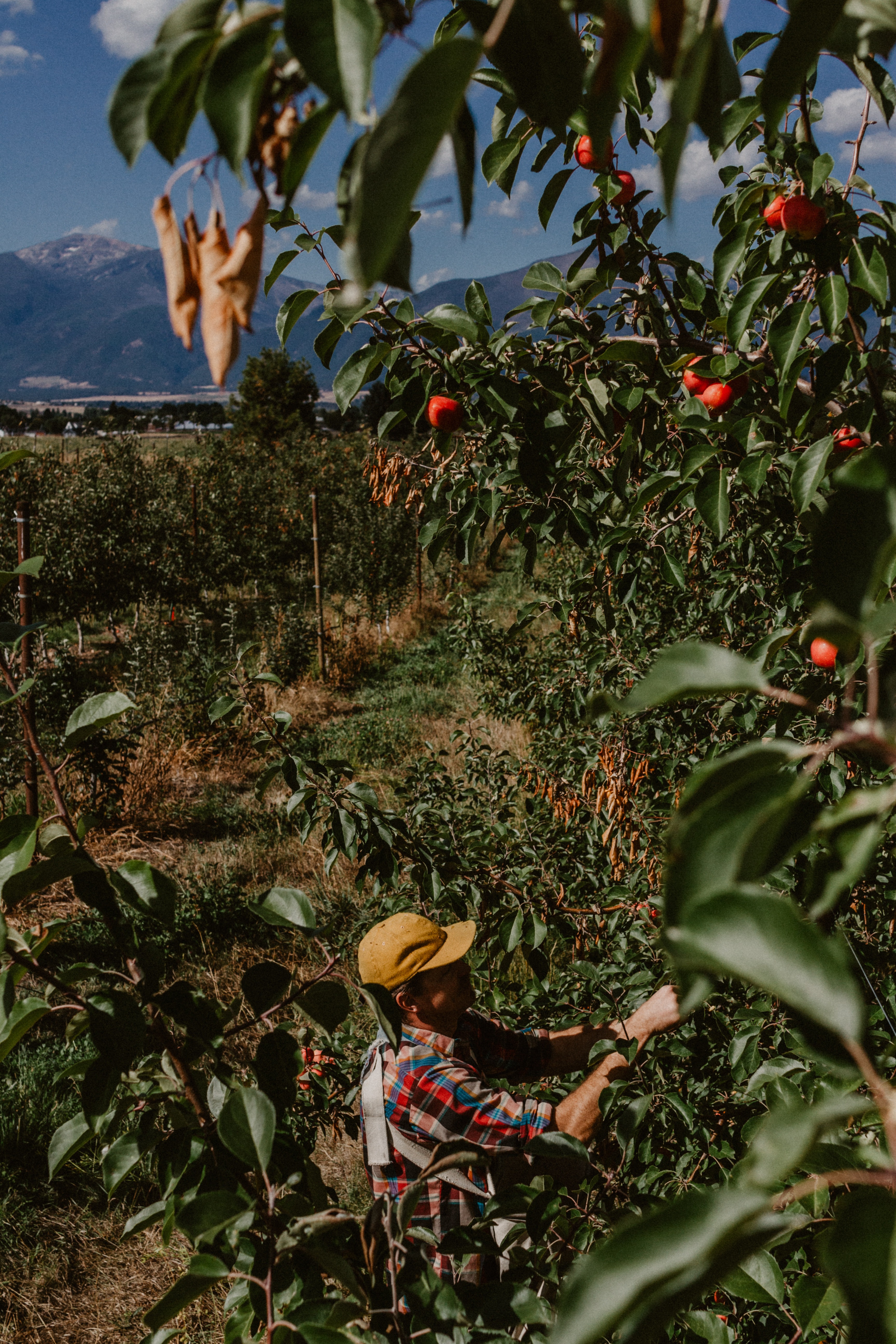
Michael arrived in Montana and started working in seasonal agricultural work, and it was by chance that he discovered his passion for orcharding. “I worked for a sheep ranch with my partner Matthew who is also from Texas. Then I got my first orcharding job at Forbidden Fruit Orchard in Paradise, Montana, growing peaches and cherries and really loved that work.” The perennial aspect of orcharding is one of the things that Michael grew to love the most. “You develop a relationship with your trees, as weird as it sounds. I have over 4,000 trees, and each tree is different. I even have cheesy names for some of them. I love pruning and shaping and training. With trees, everything you do—every cut you make affects the tree for the next three years. [With other crops,] you plant something, turn it back into the soil, and reseed. I like the seasonality of it, too. [Towards the end of summer], I am sick and tired of irrigating and dealing with weeds and dealing with all of the disease and stuff that affects apples. And then summer ends and you are on to harvesting. And then it is exciting, and it is fun and beautiful and delicious, and then your back hurts and you are exhausted and you are tired of it—and then it’s done. You have a break during the winter, and then it’s pruning season, and then you do it all over again. I really just fell in love with it.”
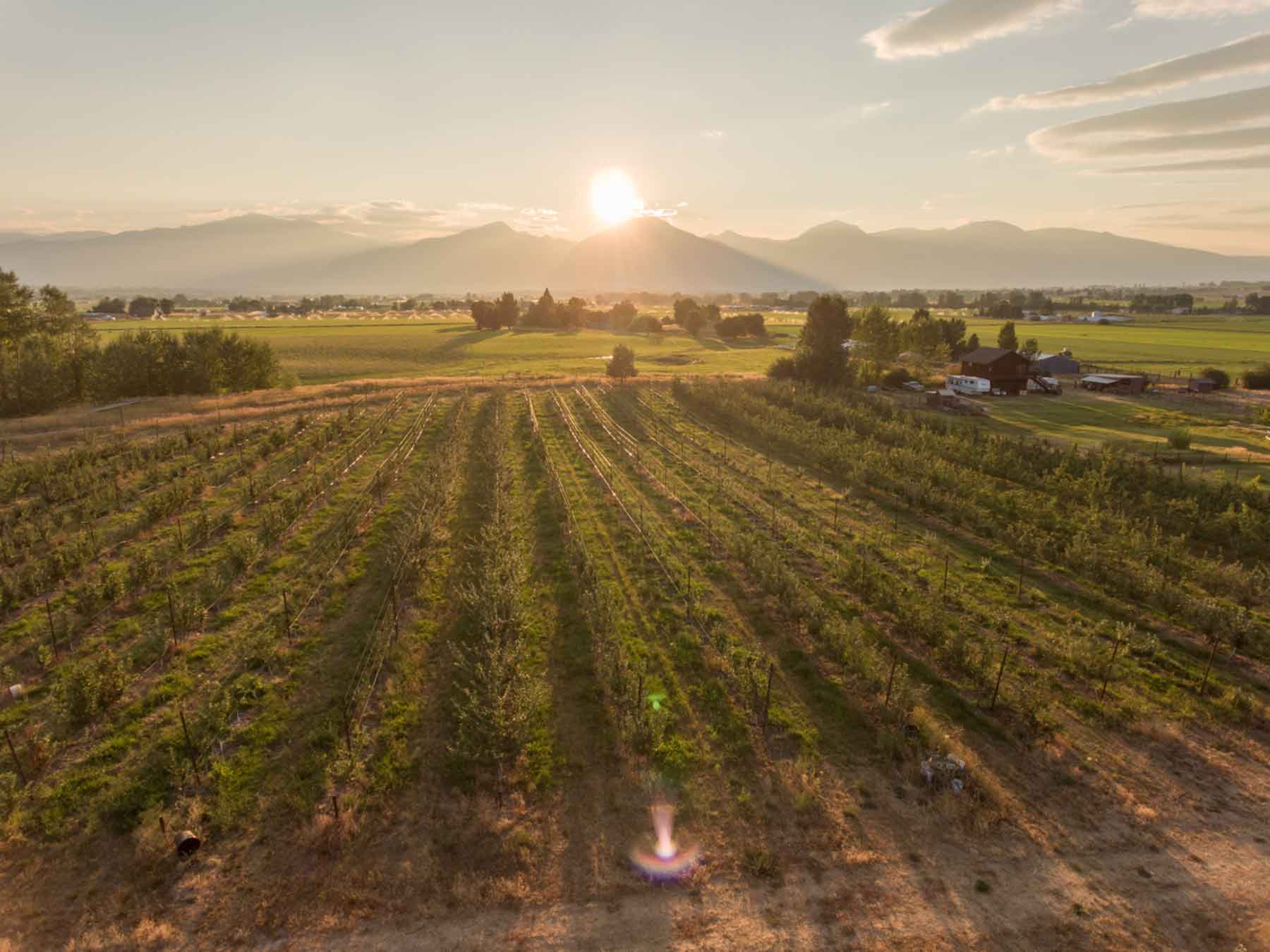
What came first, the cider or the apple? For Michael, it is a little bit of both. “I did not know what I was going to plant, but I was really interested in orcharding and wanted to start an orchard, and then I tasted my first good cider. That is when everything clicked and fell into place. It was an “ah-ha” moment.”
It was down in the Bitterroot at Montana Cider Works where Michael discovered the beverage that would soon become his life’s work. “Lee McAlpine got cider fruit from Lebanon, New Hampshire, where this guy named Steve Woods grows a specific cider apple. She made this wonderful cider from true cider apples, and before then, I had never had anything besides the mainstream, mass-produced ciders, that in most countries can’t even be labeled cider because it has apple juice concentrate, apple essence and flavoring, and corn syrup. So when I tasted this true cider, I thought: ‘Where has this been? Why can’t you buy this? Is she the only person in the world that makes this?’ I started looking into it and realized that she is using these very specific apples, and that is when I realized that no one was growing them [in Montana]. You can’t buy them, so if you want to make this amazing cider, the only way to do it is to grow these apples. I really started diving in and researching cider varieties, just learning and Googling and reading and finding people who know something about cider. Cider used to be everywhere in this country, but after prohibition it disappeared and didn’t have its resurgence until the last five years. So that was when I realized that I wanted to grow cider apples and make cider.”
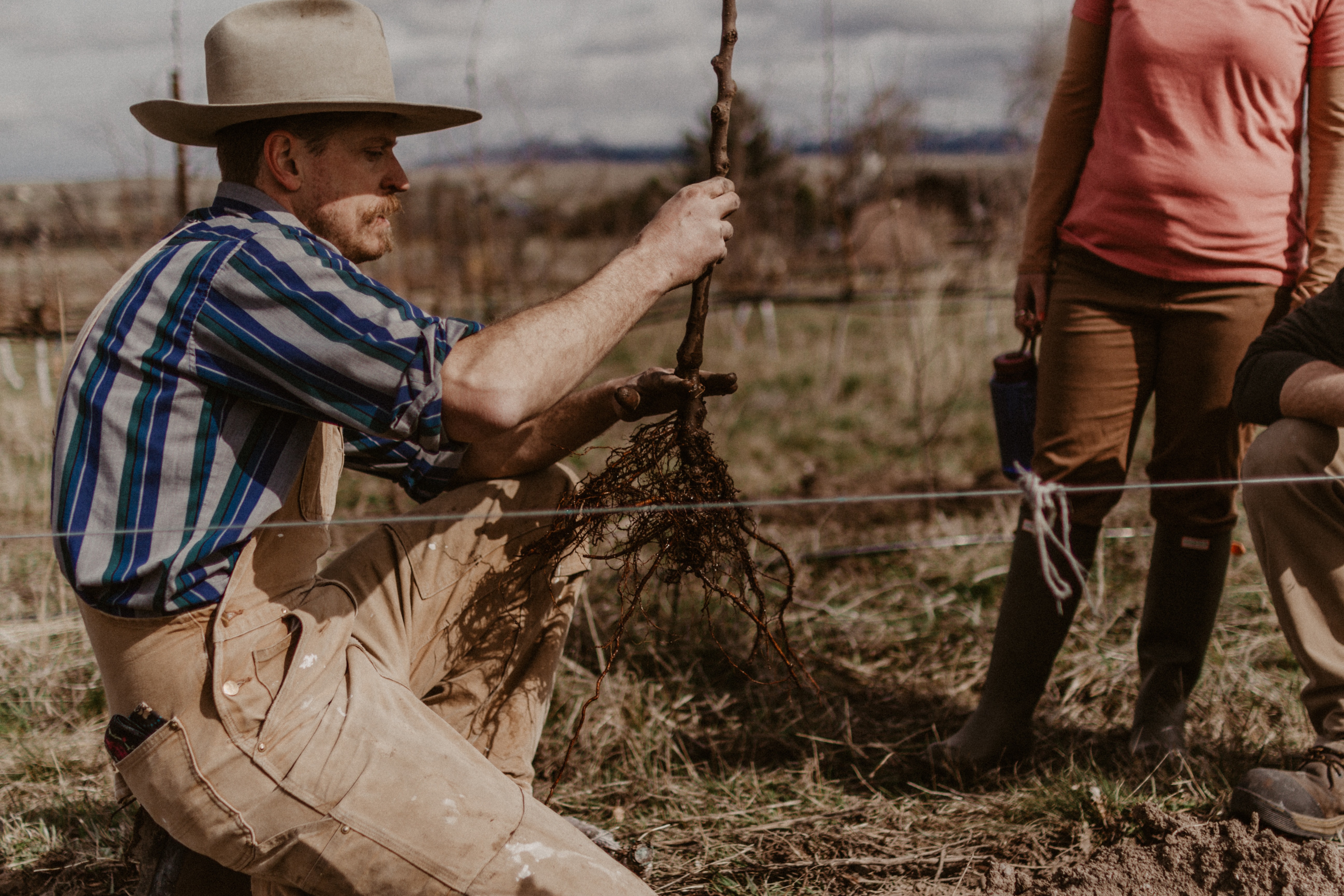
His research took him to Europe, to places like Spain and France where cider has been made for over a thousand years. Since cider is derived from the apple trees, soil and climate is a huge factor in apple production. An apple tree growing in upstate New York will produce a different tasting apple than one growing in Missoula, Montana. But luckily for Michael, and for Missoulians, Montana’s climate and history is prime for growing delicious apples. Michael knew that cider was going to take off, but he took a huge leap of faith in deciding to put all of his apples in one basket, literally.
Even though the doors opened in 2017, Michael and his partners have been working towards their dream for years.
“We started the trees in a nursery in 2010, and in 2012, we planted them in their place where they are at now. The cider industry had not really kicked off yet, there were very few people who were doing this, and if the cider didn’t take, the orchard was doomed because most of the apples I grow are miserable, terrible things to eat. They call them spitters, and there is a reason why. You bite into it, and initially you get sweetness, fruitiness, and all this great flavor. The initial bite is really pleasant and then it is immediately followed by the tannins which are astringent and bitter and suck all the moisture out of your mouth and swell your tongue up and stay with you for a long time.”
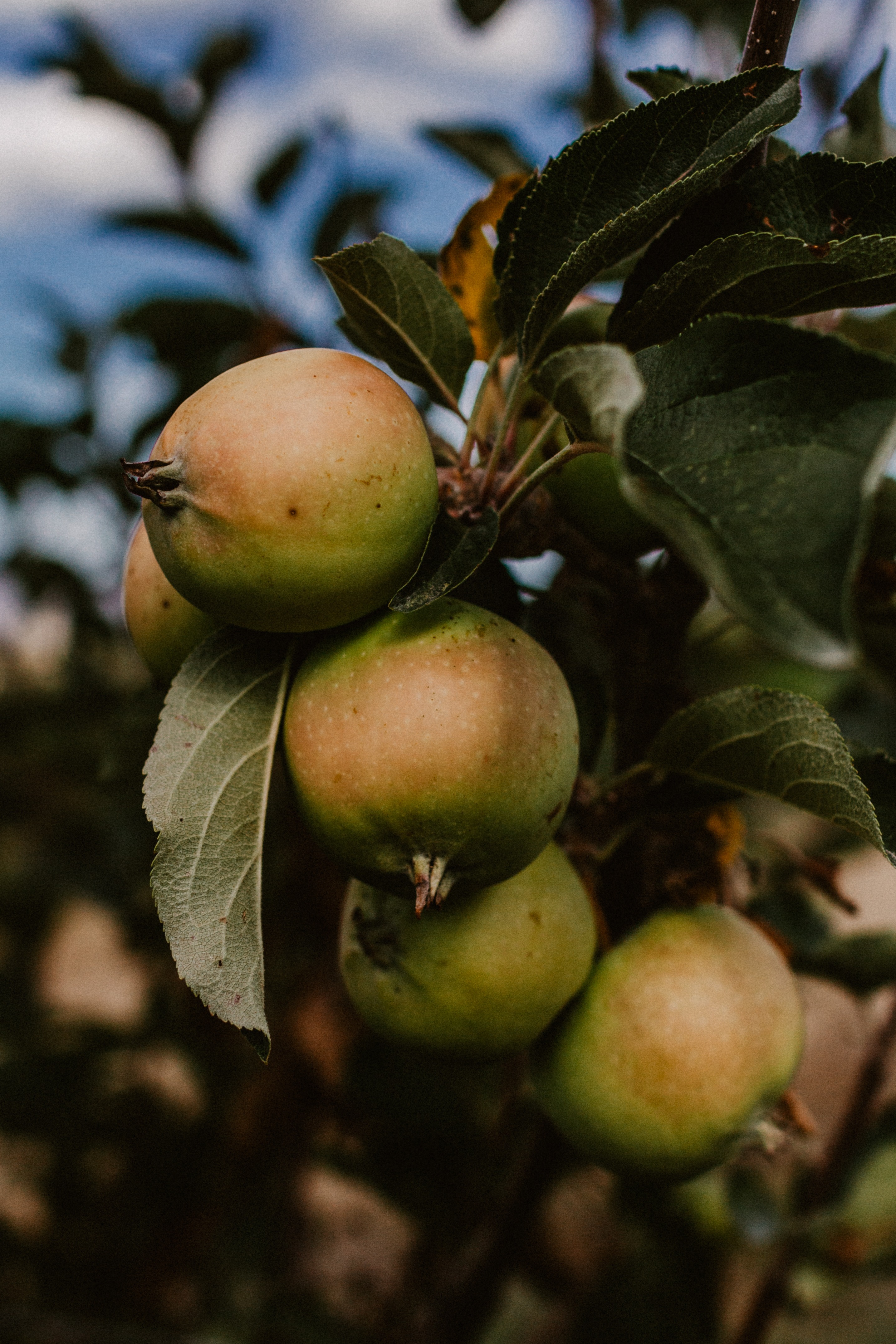
“It was a big gamble to plant the cider specific apples,” he continues. “But when I tasted good cider I thought ‘How could people not want this and how could this not take off?’ I knew it was just a matter of time. I thought a lot about craft beer and how back when I was in high school craft breweries were not a real thing. And now craft beer is everywhere. I saw cider going that way, and so this realization coupled with the Bitterroot Valley and its rich apple growing history, it all seemed to fit. It morphed a little bit from being some little Mom & Pop cidery like we originally planned. I ended up partnering with Matt LaRubbio and Jon Clarenbach and starting Western Cider.”
But starting a cidery in a market where cider was virtually nonexistent came with its unique set of challenges. “Cider is so new,” Michael says. “People don’t know about cider. People don’t understand about cider, and so we felt it was very important for the tap room to be in a larger population and have a tasting room so we could educate people on cider and be a larger voice for cider. Here in town in the tasting room we always have 12 different ciders on tap so we can educate people and make different styles of cider, and people can taste it and see how diverse cider can be.”
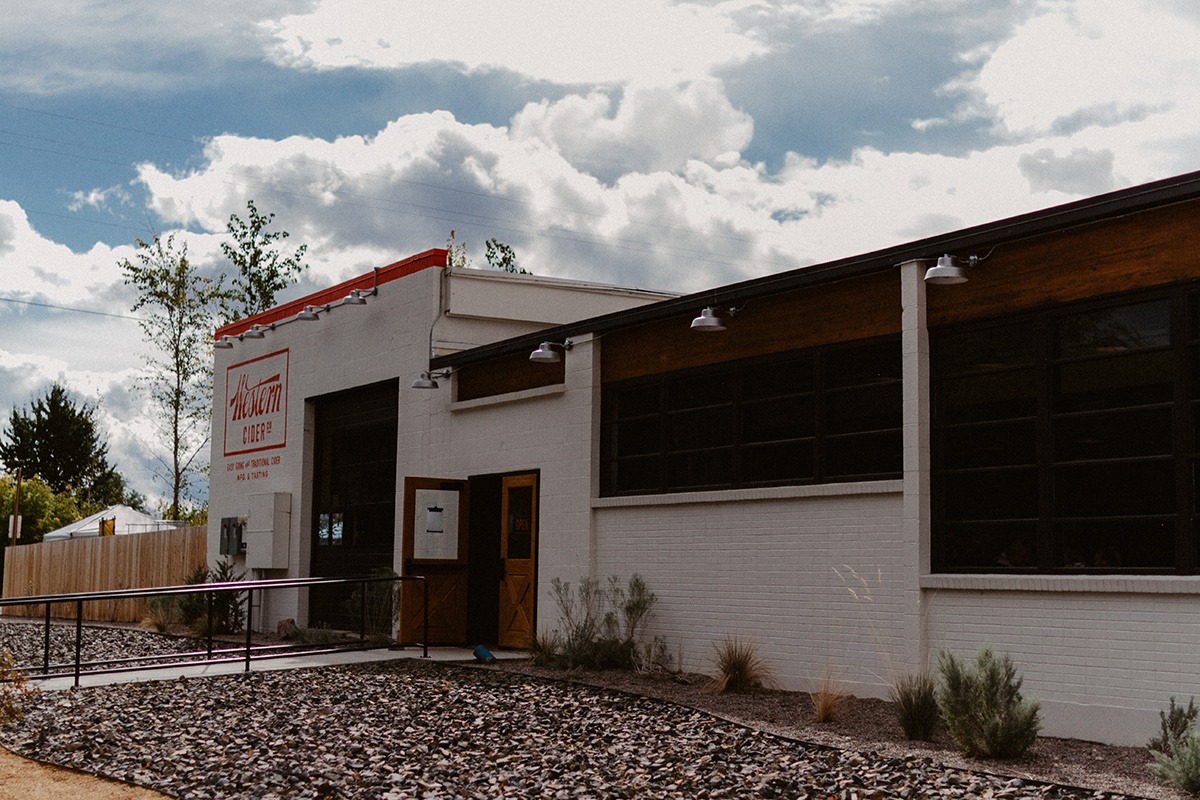
Western Cider, Missoula’s only cidery, serves up locally sourced and made apple cider, a fermented and oh-so-delicious beverage to suit drinkers with varying palettes. Are you more of a wine connoisseur? Or perhaps you tend to prefer hopped-up craft brews. Do not fear, for there is something for everyone in the cider world.
“Cider is essentially a wine. There is no different except it is apples instead of grapes. We are a licensed winery, which is why we [different hours and serving limitations compared to breweries]. So just like how wines are different region to region, it is no different with cider. People are planting more and more of these cider specific fruits but also utilizing the fruit that is already in their region.”
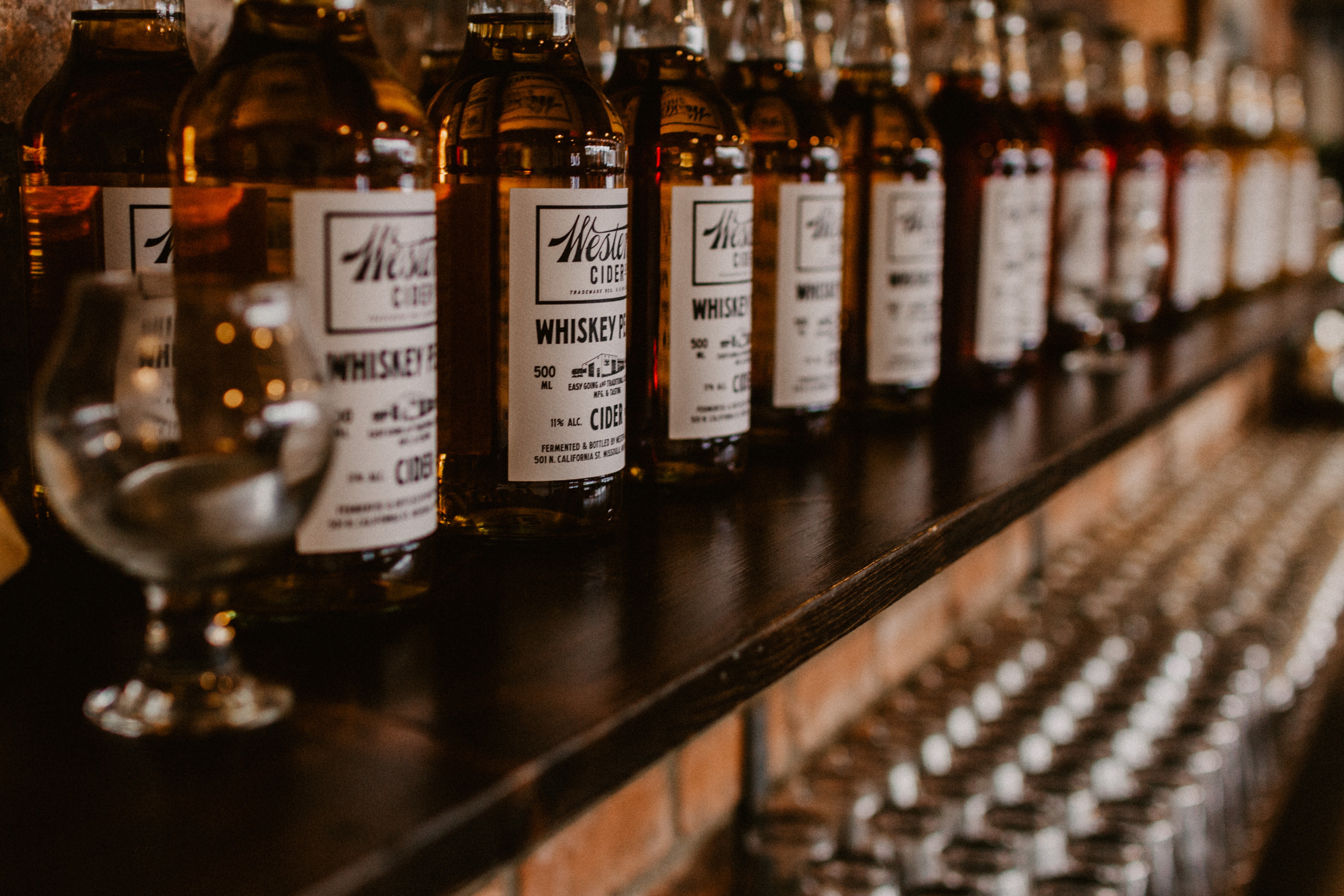
Here in Missoula, thanks to the rich apple orchard history of the Bitterroot and the Rattlesnake region, there are old McIntosh apple trees growing everywhere. And this, according to Michael, is a huge benefit to Western Cider. “In Montana, we are fortunate enough to have a wonderful apple for cider that just grows beautifully here. It’s our climate, it’s our soil. It’s Montana. It’s the cool nights. The sugar content is higher. These old orchards haven’t been fertilized in years. They haven’t been pruned and most of them haven’t been irrigated, which makes the trees stressed. With grapes, the old vines that are stressed make better wine. And it is the same with cider. You get better cider from these old trees that are stressed. That aren’t babied and overwatered and over fertilized. They are smaller, tiny apples with more flavor and more tannins in the skins and a higher skin to flesh ration and you get a superior cider."
Western Cider sources all of their apples as local as possible. Some come from Michael’s orchard in the Bitterroot, while others come from the old orchards in and around Missoula. However, Western Cider is producing too much cider to only use Montana apples, so they look towards our neighbors to the west: Washington and Oregon.
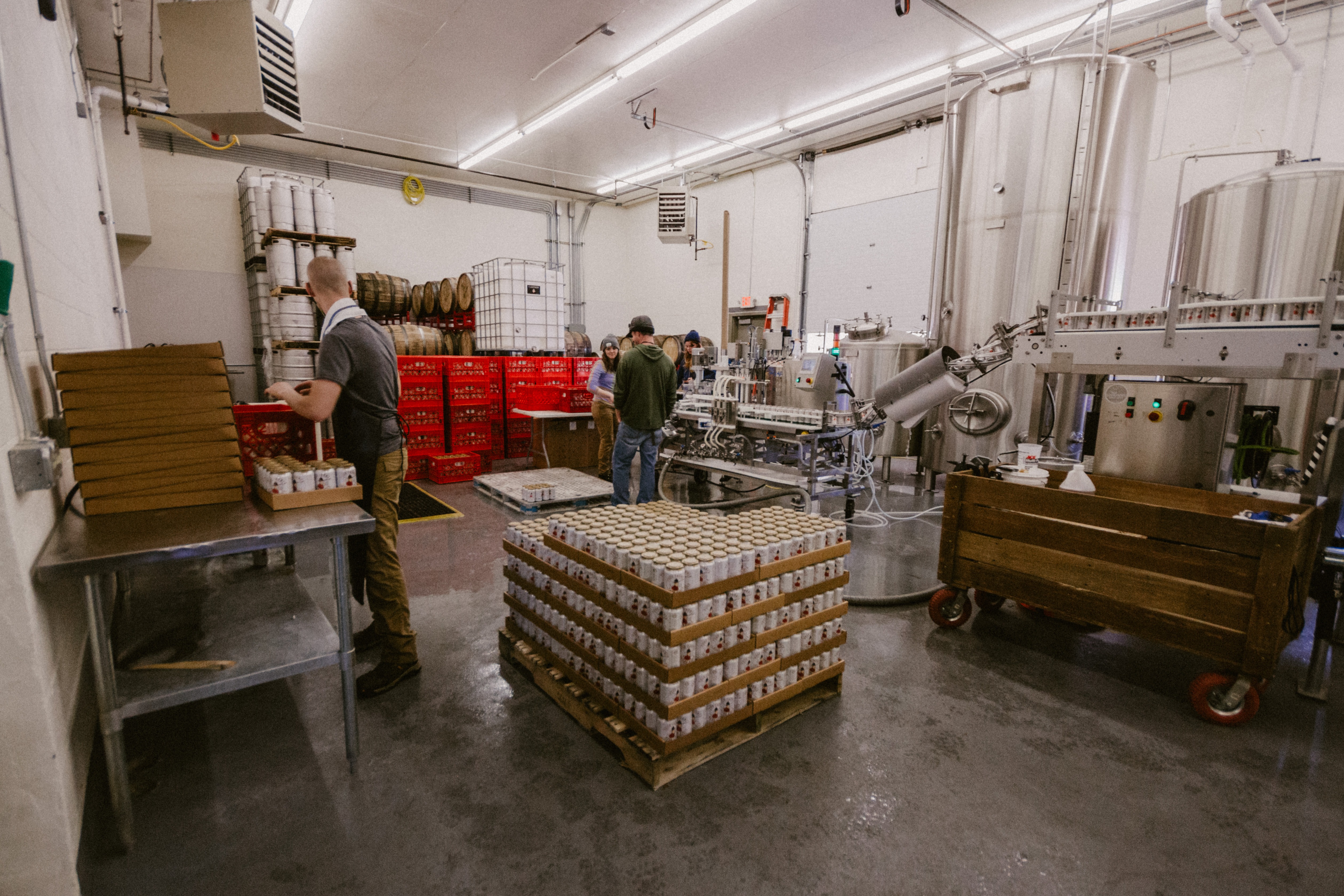
“All our apples come from the Northwest. We are making way more cider than what is currently grown in Montana, so we utilize Washington and Oregon for a lot of fruit. Cider is taking off and it has been a huge boom to orchardists. Only the prettiest and best apples make it on the grocery store shelf. And then if it doesn’t have the right size or color—if it hailed when the apples were young and they have little dimples on them—any sort of silly thing, the fruit is worthless. It is not even worth picking it. There were hundreds and hundreds of bins of fruit that were just left to rot because you pay an apple picker more than you would get for the bin of fruit. So it is really great now that cider has created a market for all of these apples that would otherwise go to waste, and the cider market just keeps growing.”
A visit to the Western Cider taproom is an experience all in itself. There are always 12 ciders on tap, and visitors can order a taster flight to sample the variety of flavors apples can produce. Some ciders drink more like wine and pair better with foods. Others are more drinkable, and are reminiscent of craft beer. Like with craft beer, every cider is different. As Michael explains, “No two are alike. There could be 20 different cideries in Missoula just like there are 20 different breweries and we could all be making different ciders. If you gave the same juice to five different cider makers and they each made a cider, they would all taste completely different.”

The Missoula community has been on board with the cidery since the beginning. “It’s funny because when we were remodeling the building, I can’t tell you how many people would come in and say, ‘Oh cider! That’s great—I love cider.’ And then they would lean over and tap me in the shoulder and say, ‘You ever think about making it with alcohol?’ And I was shocked… what do you mean, making it with alcohol? Thats what cider is! And they would respond ‘Oh, hard cider! Cool!’ Because that is what they knew. That would happen over and over again, and it made me a little nervous. I knew that cider was going to be a bit of a learning curve. A lot of people didn’t understand or know cider, but I didn’t realize it was that bad!” He laughs as he says this, and in retrospect, it is funny because from the day they opened their doors, Western Cider has been a huge hit. But it was a gamble to invest so much in something that people knew so little about. “It’s been great. Missoula has such a great history of orchards here. My kids press apples at school, there are big events at places like Moon Randolph Homestead, or neighborhoods will get together and harvest and press apples together. It feels unique. It was just easy. People were already excited. They didn’t need any real push or convincing. People were on board right away. The learning curve was more showing people the huge variety of flavors and aromas and mouth feels that you can get from ciders and different fermentations and yeasts and flavor combinations. It’s just endless. Some of them pair so well with foods like wines would, and then there is the Poor Farmer line that is more like beer. You can take it on the river and drink several. We’ll probably be making 40 different ciders this year, and the list of stuff I want to make is probably 10 times longer than that!”
Perhaps the most poignant example of the symbiotic relationship between Missoula’s community and the cidery is the Great Bear cider, a cider made from a community apple drive paired with the Great Bear Foundation.

'“In the fall, we always have a kick off for a community apple drive which [gathers apples to make] the Great Bear. We partner with the Great Beat Foundation, whose mission is to keep bears out of Missoula’s neighborhoods, primarily in the Rattlesnake, which is a big corridor with old orchards and fruit trees everywhere, so there are bears in the neighborhoods daily in the fall. Remove the fruit and bears don’t come down into town. We partnered with them because it is a great way for us to get apples to make a cider, and there is a lot of really interesting fruits out there that makes great ciders that are just in peoples yards, like old McIntosh trees and great crabapples. It was amazing to see the diversity of fruit that came in last year. Partnering with them, they have very few resources and it is all volunteer driven, so they were getting all these old donated boxes from liquor stores to collect the fruit and they didn’t have anywhere to store the apples, so it worked out great. They can drop all of their fruit here and 10% of the proceeds of the sale of the Great Bear cider goes back to that organization. In addition, individuals can bring in their own apples into the tasting room, and for every 40 pounds donated they get a $5 coupon for cider. If they have over 200 pounds, they can email us and we find a time to come here and use the loading dock. Otherwise they bring them up to the bar and the bartenders will weigh and check the apples and as long as they are not bruised or rotten or been cut, we will take them.”
The result? A variety of ciders with different flavor profiles. Last year there were three iterations of the Great Bear, and this year depends on which applies come into the cidery this fall.
“The Great Bear ciders will always be different, so it is a little bit of a challenge from the cider making standpoint. I do an initial blending of putting the different cultivates into different batches, and some will just shine on their own. Last year we had a lot of pears and one had a lot of crab apples, and so we put most of the crabapples in one, and then the third one was more McIntosh or a lot of culinary and dessert apples, which are normal apples that are great for eating but can make a really boring cider. So the first two batches we were kind of light-handed from a cider-making standpoint and just let the fruit shine, and on the third batch we did more magic to it to make it special. So we layered a couple different yeasts in there during the fermentation to add depth and complexity and some mouth feels. Then we barrel aged it in a Whisky Peach barrel for six months, and it turned out really nice.”
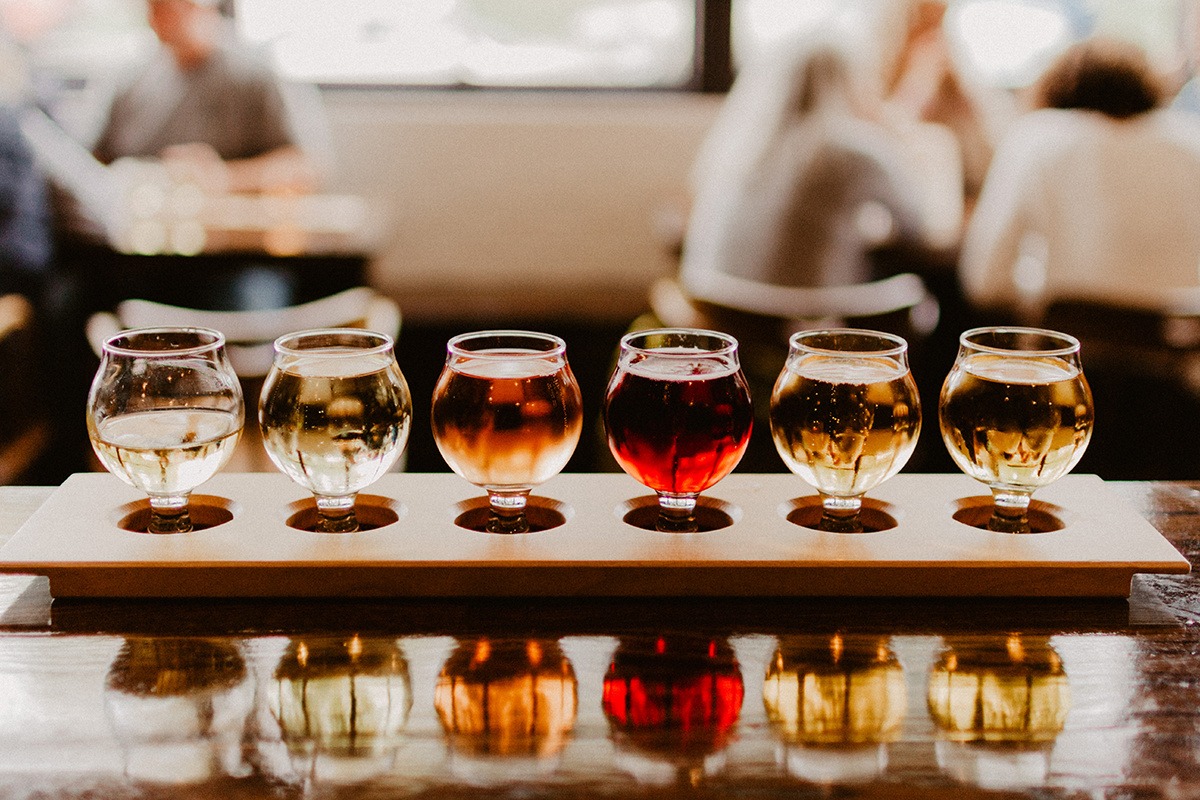
The future for Western Cider is bright. Their building is located on the banks of the Clark Fork, a short distance from historic downtown and directly across the walking bridge from the up-and-coming Sawmill Gulch District. Western Cider hosts events throughout the year, including serving as the kickoff spot for the Montana Cider Week. So next time you find yourself in the Last Best Place, take a seat at the bar and order yourself some of Montana’s best cider—you can thank us later.
If you're giving dry a try this month, Missoula has plenty of spots for mocktails. Check out some of our favorites
Follow Us